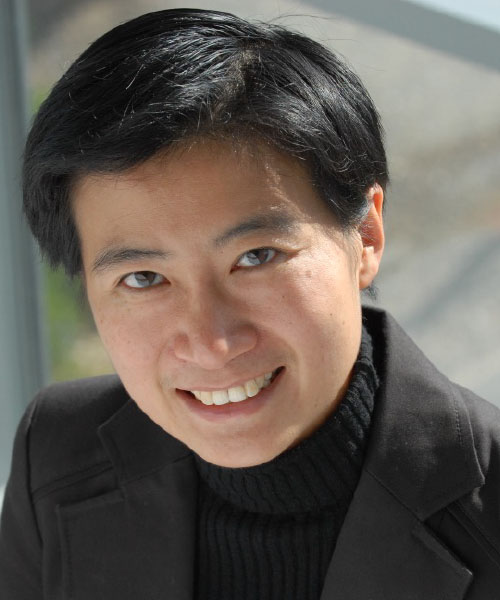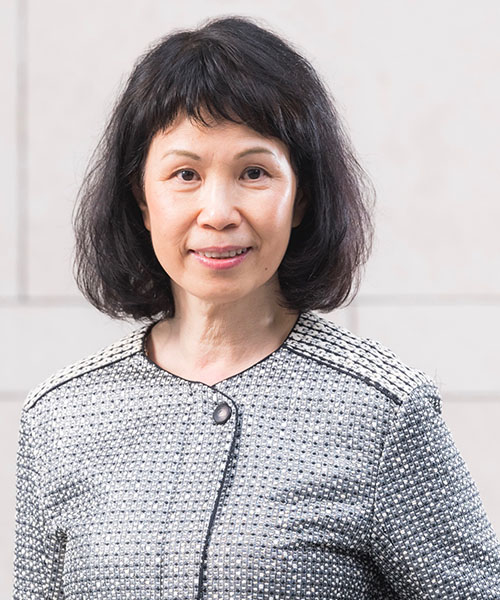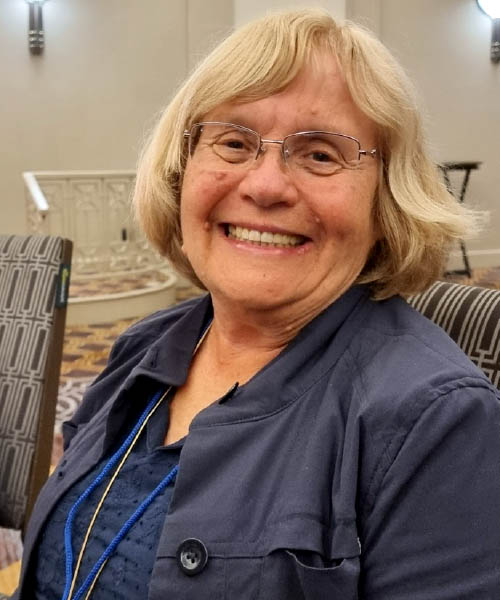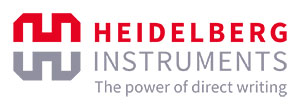Women In Nanofabrication (WIN)
WIN is a networking event that brings together women (and non-binary) professionals in science and industry from around the world to exchange ideas through diversity and inclusion to advance the fields of lithography and nanotechnology. For more information about the WIN community, please join the EIPBN Women in Nanofabrication Group.
WIN Monthly Meetings
The WIN meetings were launched virtually through EIPBN Gather Town during EIPBN 2021 and are ongoing. Currently, we are hosting monthly ZOOM meetings on the first Friday of each month at 7:10 am PST. They are open for all women and non-binary scientists interested in nanofabrication. Look below for a complete list of meeting dates and speakers.
Please contact Carla Perez Martinez at carla.perezmartinez@ucl.ac.uk if you want the link to attend or if you are interested in presenting a technical talk about your research.
WIN New Meeting Series Speakers
Meeting Location: Virtual Meeting
Time: 7:10 AM PST, 10:10 AM EST, 3:10 PM London, 10:10 PM Beijing
Please find the latest updates below.
Meeting Date
September 6
Speaker
Gina Adam
Title
Title: Nanoscale neuromorphics – a personal and professional journey
Abstract: Training of current artificial intelligence models is usually executed in microprocessors, graphics processing units or tensor processing units. These have limited capacity and need significant data exchange between processing and memory at high hardware, environmental and financial costs. Emerging nanoscale devices, like memristors (also called resistive switches or ReRAM) have shown potential for the compact and efficient implementation of artificial synapses for neuro-inspired computing, thanks to their analog programmability and spike timing dependent plasticity, among other advantages. In this talk, I will talk about their potential applicability for neuromorphic hardware and our projects in this area. I will also talk about my professional and personal journey in this amazing field and opportunities for newcomers.
Meeting Date
October 4
Speaker
Monika Fleischer
Institute for Applied Physics, Eberhard Karls University Tübingen, Tübingen, Germany
Monika Fleischer received her Ph.D. in physics from Eberhard Karls University Tübingen in Germany, where she was appointed junior professor, then full professor at the Institute for Applied Physics. She serves on the board of directors of the Center for Light-Matter-Interaction, Sensors and Analytics. Her research focuses on plasmonic nanostructures, nanofabrication, and optical spectroscopy of hybrid nanosystems.
Title
Title: Exploring optical antennas and hybrid nanoantenna-systems
Abstract: Plasmonic nanostructures that act as antennas for visible light offer interesting opportunities for locally concentrating and enhancing the electric near-field of an incident light wave, or of spectrally tuning the antenna characteristics via the size, shape and material. By combining the antenna structures with a second component in hybrid configurations, such as quantum dots, fluorescent molecules, or organic thin-films, the antennas can be employed to modify the absorption and emission characteristics of these objects in the coupled system. Key challenges in this context are the optimization of the antenna properties in view of the envisaged application, as well as achieving selective coupling of the nano-emitters to the hotspots of individual antennas.
In our research, we address the top-down nanofabrication of optical antennas by various nano-lithographic techniques. Their optical properties are experimentally and numerically investigated. Applications of hybrid antenna configurations for e.g. strong light-matter coupling, improved single photon sources, structural colours, flexible plasmon rulers, or biosensing are explored.
Past Meeting Series Speakers
August 2
Dr. Laura C Zanetti-Domingues
(CLF Octopus)
Title: (Cryo-)vEM and (cryo-)CLEM at the CLF Octopus facility
Abstract: Cryogenic ultrastructural imaging techniques such as cryo-electron tomography have produced a revolution in how the structure of biological systems is investigated by enabling the determination of structures of protein complexes immersed in a complex biological matrix within vitrified cell and model organisms. However, this is mostly true of very abundant proteins which reliably form a single type of complex and does not account for the wider cellular context. To understand biological processes related to health, disease or environmental processes, cryo-ET must be complemented by a suite of complementary techniques and correlative workflows that help paint a more complete picture and to pinpoint rare events for more detailed studies that capture biological heterogeneity.
The CLF Octopus facility has developed two super-resolution cryogenic fluorescence techniques, superSIL-STORM and astigmatism-based 3D STORM, and we are working towards high-resolution correlation with FIB-SEM nanomachining to produce detailed maps of cellular and protein ultrastructure. In parallel, we have also developed a portfolio of techniques that enable us to collect serial EM data on larger volumes of samples to understand the spatial relationships between the various components of biological or biocomposite samples. This presentation showcases their application to a selection of scientific questions and discusses their advantages and limitations and their future applicability to other biological questions and technological advancements.
Bio: Dr. Demircan Yalcin received her, B.Sc., MSc, PhD in Electrical and Electronics Engineering from the Middle East Technical University, Ankara, Turkey in 2010, 2013 and 2018, respectively and she also has a Minor Degree in Biology from the same university. She received her Ph.D. on the topic: A Lab-on-a-chip System Integrating Dielectrophoretic Detection and Impedance Counting Units for Chemotherapy Guidance in Leukemia by pursuing her enthusiasm for creating tools for early diagnosis and prognosis of fatal diseases. During her 14 years’ hands-on laboratory experience, she studied various fields of biosensors and microsystems technology such as lab-on-a-chip systems for blood and cancer cell applications and MEMS-based dielectrophoretic cell separation systems for multidrug resistance studies of cancer cells. Between 2015 and 2019, she was involved at Mikro Biyosistemler, Ankara, Turkey as an R&D Engineer. She had a crucial role in the foundation and development of first prototypes. Then, she worked as a Postdoctoral researcher in the Neuro-Nanoscale Engineering group of Prof. Regina Luttge by making design, set up, and perform experiments in the laboratory to mimic and analyze neurodegenerative diseases on biosensor. Finally, she worked in a start-up company, InnoFluidics, as a senior scientist between 2022-2024 by developing a state-of-the art spectroscopy product.
July 5
Yagmur Demircan Yalcin
(Eindhoven University of Technology, Mechanical Engineering Department)
Title: A journey of a scientist in pursuit of curiosity
Bio: Dr. Demircan Yalcin received her, B.Sc., MSc, PhD in Electrical and Electronics Engineering from the Middle East Technical University, Ankara, Turkey in 2010, 2013 and 2018, respectively and she also has a Minor Degree in Biology from the same university. She received her Ph.D. on the topic: A Lab-on-a-chip System Integrating Dielectrophoretic Detection and Impedance Counting Units for Chemotherapy Guidance in Leukemia by pursuing her enthusiasm for creating tools for early diagnosis and prognosis of fatal diseases. During her 14 years’ hands-on laboratory experience, she studied various fields of biosensors and microsystems technology such as lab-on-a-chip systems for blood and cancer cell applications and MEMS-based dielectrophoretic cell separation systems for multidrug resistance studies of cancer cells. Between 2015 and 2019, she was involved at Mikro Biyosistemler, Ankara, Turkey as an R&D Engineer. She had a crucial role in the foundation and development of first prototypes. Then, she worked as a Postdoctoral researcher in the Neuro-Nanoscale Engineering group of Prof. Regina Luttge by making design, set up, and perform experiments in the laboratory to mimic and analyze neurodegenerative diseases on biosensor. Finally, she worked in a start-up company, InnoFluidics, as a senior scientist between 2022-2024 by developing a state-of-the art spectroscopy product.
May 3
Eva de Leo (Binnig and Rohrer Nanotechnology Center)
Title: Nanotechnology through my lens
Bio: Eva De Leo is Manager of the Binnig and Rohrer Nanotechnology Center (BRNC), a state-of-the-art research facility, operated jointly by IBM Research Zurich and ETH Zurich. The nanocenter provides cutting-edge technology and know-how for advancing nanosciences. Eva has a broad background in the design, fabrication and characterization of devices on the micro- and nano-scale. After her studies in Electronic Engineering, that she pursued while working as technical manager for an IT company, she dived deeper into nanoscience and cleanrooms during her Master’s degree in Micro and Nanotechnologies for Integrated Systems in Politecnico di Torino, INP Grenoble and EPFL, with research projects also at Philips Research Eindhoven and MIT. She received a PhD degree from the Optical Materials Engineering Laboratory of ETH Zurich in 2018 for her work on nanostructured surfaces and fluorescent emitters. Afterwards, she worked as R&D manager for the startup Polariton Technologies on electro-optic devices.
April 5
Luisa Bozano (Applied Materials)
Title: Electrons, Materials and all the beautiful interactions
Bio: Luisa has explored and invented in nanofabrication materials and methods for nearly 25 years. Her interests at the interface of physics, material science and chemistry led her to pursue advanced studies at UC Santa Cruz after receiving her Laurea degree in Physics from the University of Genoa in her native Italy. While receiving her doctorate, she joined IBM Almaden Research. Her work at IBM ranged from the application of metal oxides and polymers to sensors and electronics, to development of resist materials and e-beam methods for improved optical mask lithography. Her leadership in these spaces yielded over 30 issued patents, and as impressively, successful transfer and commercialization of patterning materials to external collaborators. Luisa now leads Applied Materials' interests in advanced patterning, from e-beam to packaging, as Director of Patterning Engineering.
March 1
Guest chair - Afshan Begum, Quantum Photonics Group, National Institute for Materials Science, Japan
Title: Junior researcher event
Fatemeh Kalantari, M.Sc, Nano-electronics, RA, Shahid Rajaee Teacher Training University, Ira
Improved sensing characteristics using Graphene Quantum Dots
Mahdieh Shojaei Baghini, Marie Skłodowska-Curie Early-Stage Researcher, University of Glasgow, Scotland
Microfabricated resonators for the UHF band
Aakanksha Sud, JSPS Postdoctoral Fellow, Tohoku University, Japan
Nonlinear coupling mediated by multi-magnon interactions in synthetic antiferromagnetic thin films
Plus, gain valuable career-building insights from Ann-Katrin U. Michel, Cluster Lead at Sensirion, Switzerland.
February 2
Loes Segerink (University of Twente)
Title: The smaller, the better? Use of microfluidic devices for healthcare applications
Abstract: During my PhD project at the University of Twente (prof. van den Berg), I developed a point-of-care semen analyser system that measured the concentration and motility of spermatozoa in human semen. After 4 years, I successfully defended my work and its impact has been recognized by the Simon Stevin Leerling award (2011), Simon Stevin Gezel award (2012), and enormous media exposure. After obtaining my PhD, I started as a postdoc in the same group and co-founded the spinoff Cellanyzer B.V. for which I received the STW Valorisation grant phase 1 and 2 (2012) In 2013, I worked for several months in the group of prof. dr. Helene Andersson Svahn (KTH, Sweden) on the use of paper microarrays for rapid biomarker detection in serum. In that same year, I received my Veni grant to develop new techniques to assess and select spermatozoa for assisted reproductive technologies. In October 2014 I became an assistant professor (tenure track) at the University of Twente, followed by associate professor in October 2017, adjunct professor in May 2019 and full professor in July 2021.
January 5
Giulia Tagliabue (Ecole Polytechnique Federale de Lausanne)
Title: Unraveling Hot Carrier Transfer Processes in Plasmonic Energy Devices
View Abstract & Bio
December 1
Leia Giorgiou (SRI International)
Title: Nanofabrication Coast-to-Coast
Bio: Vasileia Georgiou is a Process Integration Engineer in Microcircuit Emulation Center (MEC), SRI International. She received her BA and M.Eng. in Electrical and Computer Engineering from National Technical University of Athens, Greece, and her M.A. and Ph.D. from George Mason University. Her Ph.D. research as well as her post-doctoral work was performed at the National Institute of Standards and Technology. She then joined the Non-volatile Memory Research Lab in Western Digital where she worked mainly on developing nanoelectronic devices for bio-molecular identification. At her current position at SRI she is the Integration Engineer responsible for the deliverable products.
November 3
Guest chair - Jana Chaaban (Heidelberg)
Title: Junior researcher event
Bio: Dr. Jana Chaaban holds a Bachelor's in Physics from McGill University and a PhD in Mechanical Engineering from the ETH Zürich. In her doctoral research, she focused on high-resolution electrohydrodynamic nanodrip printing and its scalability via the microfabrication of a chip-based multi-nozzle printhead. Her research activities took her to internships and project work at the American University of Beirut Medical Center, IBM Research in Zürich, ABB, and since 2021 Heidelberg Instruments Nano. At Heidelberg Instruments, Jana is a Senior Applications Engineer in the Process and Applications Laboratory in Zürich, Switzerland. In this capacity, she leads process development and application demonstrations with the NanoFrazor systems. She periodically mentors students, interns, and co-workers in and outside of the lab.
Wendy Chen (PhD student, University of Chicago and Argonne National Laboratory)
Title: Using block-copolymer nanolithography to produce ultrathin SiNx isoporous membranes
Bio: Wen received her bachelor’s degree in Polymer Science and Engineering from Zhejiang University in China. She is currently pursuing a PhD under the direction of Prof. Paul Nealey and Prof. Seth Darling in Pritzker School of Molecular Engineering in the University of Chicago and Argonne National Laboratory. She works on fabricating isoporous membranes that allow to study solute and charged species transport behavior in aqueous system using Directed self-assembly of block copolymer and other relevant nanofabrication techniques
Tina M. Hayward (PhD student, University of Utah)
Title: Device fabrication for optical lever measurement of torsional motion
Bio: Tina M. Hayward graduated from the University of Utah with a B.S. and M.S. in Electrical Engineering, and is currently pursuing her PhD in Electrical Engineering. She joined Menon Group in Fall, 2021, and is currently working to experimentally demonstrate a very long-range non-diffraction beam, as well as build a lightweight infra-red imaging system. In her free time, Tina enjoys playing music, reading, and working on stage lighting.
Chloé Bureau-Oxton (postdoc researcher at IBM Research Europe - Zürich)
Title: A Si-MOS fin-FET as an on-tip scanning electrometer
Bio: Dr. Bureau-Oxton received her PhD from the Université de Sherbrooke (QC, Canada) in 2021. She conducted her doctoral research at Sandia National Laboratories (NM, USA) where she worked on coherent control of spin-orbit-driven singlet-triplet qubits in Si-MOS devices. In particular, she focused on measuring the fidelity of these qubits using gate set tomography. Prior to her PhD, during her Master's degree at the Université de Sherbrooke, Dr. Bureau-Oxton worked on the fabrication and measurement of gate-defined GaAs/AlGaAs double quantum dots with cobalt nanomagnets. She is currently a postdoc researcher at IBM Research Europe - Zürich. Her work focuses on integrating semiconductor quantum dots onto the tip of an atomic force microscope (AFM) cantilever in order to achieve high-resolution electric field sensing.
Xia Liu (Professor in Beijing Institute of Technology, China)
Title: Multiple and Gray-Scale Thermal Scanning Probe Lithography
Bio: Xia Liu received her Ph.D. in Institute of Microelectronics at Tsinghua University, Beijing, China, in 2017. From September 2012 to October 2013, she was a visiting student in University of California at Berkeley. From August 2017 to October 2018, Dr. Liu was entitled as a Wen H. Ko Fellow at Case Western Reverse University, USA. From year 2018 to 2023, she was a researcher scientist in Microsystems laboratory, EPFL. Currently, she is a professor in Beijing Institute of Technology and an adjunct professor in CAS. She has demonstrated outstanding effort to research and explorations in micro/nanoscale devices and integrated systems, both at the frontiers of fundamental device physics and toward cutting-edge micro/nanotechnologies for emerging applications. She has authored or co-authored more than 40 peer-reviewed papers. Her doctoral dissertation is titled “Cardiomyocyte-Driven Energy Harvester and Ultrahigh Piezoelectric Nanofibers”, which is awarded with “Tsinghua University Excellent Doctoral Dissertation Award, First Prize” in 2017. Her current research interest is focused on advanced manufacturing of 2D semiconductor nanostructures, electronic nanodevices and sensing applications.
October 6
Follow the Nano-brick Road
September 1
Kirsten Moselund (PSI)
A career in semiconductors - electrons, photons and qubits
August 4
Marianna Sledzinska (Catalan Institute of Nanoscience and Nanotechnology, Spain)
Title Fabrication techniques for phonon engineering in low dimensional materials
Abstract: The central concept in phononics is the tuning of the phonon dispersion relation, also called phonon engineering, which provides a means of controlling related properties such as group velocity or phonon interactions. In this talk I will revise experimental achievements in the fabrication and application of 2D phononic crystals enabling the modification of the phonon dispersion relation of surface and membrane modes for the control of elastic waves/phonons propagation. These artificial materials offer the potential of modifying and controlling the heat flow to enable new schemes in thermal management.
July 7
Joint WIN+WAVES meeting
Networking event with an informal discussion “Enhancing professional visibility by networking via networks”
May 5
Elena Pinilla-Cienfuegos (Centro de Tecnología Nanofotónica de Valencia, Universidad Politécnica de Valencia)
Accurate & Reproducible Method for Single Nanoparticle Positioning on Nanostructures
April 7
Guest Chair: Natalya Kublik (Arizona State University)
Young Investigators
Beihang Yu (Postdoc at the Berkeley Lab, working with Dr. Ricardo Ruiz and Dr. Ron Zuckermann)
Bioinspired, sequence-defined polymer brushes as patternable surface modification monolayers for semiconductor/bio interfaces
Petrovic Jelena (PhD in microtechnology and currently a Scientist Postdoc ETH Zurich and Paul Scherrer Institute, Switzerland with Lucia Romano)
Microstructured fiber-based probes for application in optogenetics
Adan Azem (University of British Columbia, Canada)
Infrared waveguide integrated superconducting nanowire single-photon detectors (work in progress)
Jan. 6
Leeya Engel (Assistant Professor, Faculty of Mechanical Engineering, Technion - Israel Institute of Technology)
There is no single track to the tenure track: my experience from PhD and Postdoc to Assistant Prof.
Bio: Leeya Engel is an Assistant Professor of Mechanical Engineering at the Technion – Israel Institute of Technology. Her research interests lie at the interface of microfabrication and biology (bio-MEMS). Leeya received her B.Sc. in physics from The Hebrew University of Jerusalem, Israel in 2008 and her Ph.D. in materials engineering and nanotechnologies in 2016 from Tel Aviv University, Israel. Leeya’s doctoral work focused on developing electroactive polymer micro-actuators and was recognized by several research awards including the AVS Nellie Yeoh Whetten Award. Leeya completed her postdoctoral studies at Stanford University in 2022. At Stanford, Leeya developed new bio-MEMS and pioneered the use of micropatterning for cryo-EM of cells. Her lab continues to engineer the cell microenvironment to understand how life works at the nanoscale.
Dec. 2
Carla Perez Martinez (UCL)
Using rockets in nanomanufacturing
Abstract: The ionic liquid ion source (ILIS) was originally proposed as a device for space propulsion. In an ILIS, a beam of ions is produced from an ionic liquid, or room temperature molten salt, by using electric fields. In this talk, I give an overview of the application of ILIS in space thrusters and motivate the use of ILIS to treat materials. The many chemistries made available by ionic liquids could be of advantage for material etching, in focused ion beams, and for material deposition.
Bio: Carla Perez Martinez is a UKRI Future Leaders Fellow at the London Centre for Nanotechnology at University College London. Carla obtained her BS, MS and PhD degrees from MIT in 2011, 2013 and 2016, respectively. For her undergraduate and graduate research, Carla worked with Prof Paulo Lozano in the MIT Space Propulsion Lab, developing ionic liquid ion sources. After her PhD, she moved to the UK to take up a postdoctoral position in the group of Prof Susan Perkin in the Physical and Theoretical Chemistry Laboratory at the University of Oxford, where she was also appointed Junior Research Fellow at Trinity College. At Oxford, Carla studied ionic liquids and electrolytes under nanoconfinement, in particular, the response of these substances when subjected to electric fields. In January 2020, Carla moved to the London Centre for Nanotechnology with funding from UKRI to set up her own group, to develop new nanomanufacturing technologies based on ionic liquid ion source.
Nov. 4
Updates from our young investigators
Afshan Begum, National Institute for Materials Science and University of Tsukuba (Japan) - Fabrication of large array photonic crystals to observe double Dirac-cones materialized by accidental degeneracy
Alba Arroyo-Fructuoso, University of Valencia (Spain) - Modulation of the Critical Current Induced by an Electric Field in Superconducting Nanowires Grown by He+ FIBID
Sarah Spector, Massachusetts Institute of Technology (USA) - Nonplanar Nanofabrication via Interface Engineering
Mengdi Bao, Rochester Institute of Technology (USA) - Simple, Sensitive and Instrument-free Detection of Viral Nucleic Acids
Victoria Ravel, George Washington University (USA) - Dual-compartment microelectrode array for investigation of neuronal network media exchange
Oct. 7
Farnaz Niouri (MIT)
Engineering at the Limits of the Nanoscale
Sept. 2
Sijia Xie (Shanghai Industrial mTechnology Research Institute (SITRI), Shanghai, China)
Hybrid structures by direct write lithography—Tuning the contrast and surface topography of grayscale photoresist with nanoimprint (JVSTB- EIPBN 2022 Best Paper Award)
Aug. 5
Theda Daniels-Race (LSU)
One of These Things is Not Like the Others: An African-American Woman's Journey to the Academy
July 2
Jessica Andriolo (Montana Technological University and Alpha Technology, LLC)
Applied Nanoscale Solutions for the Environment, Medicine, and Materials Fabrication
May 6
Grande walk: Highlight on students and postdocs posters
Poster session and Exhibition Hall EIPBN 2021
Apr. 1
Dr. Lucia Romano (ETH Zurich; Paul Scherrer Institute; and University of Catania)
Gas phase MacEtch: unparalleled high aspect ratio silicon nanostructures
Mar. 4
Dr. Rosa Córdoba Castillo (Universitat de València)
How I went from PhD to junior lead researcher
Feb. 4
Helen Kardan, ASML
My career path through the cultures
Jan. 7
Dr. Alexandra Joshi-Imre (University of Texas at Dallas)
Microfabrication of neural interface electrode arrays for chronic in-vivo applications
Yutika Badhe (University of Texas at Dallas)
Stretchable electronics based on a nanofiber reinforced soft composite material
Dec. 3
Dr. Elizabeth A. Dobisz (Senior Consultant at SLAC National Accelerator Laboratory)
My example of a career path in Nanofabrication
Nov. 5
Dr. Anuja DeSilva (Lam Research)
My career path learnings in Semiconductor Research: How to persevere and advocate?
Oct. 1
Natalya Kublik (Arizona State)
Increasing density of additively manufactured copper parts utilizing solid-nanoporous hybrid feedstock with higher energy absorption properties
WIN Honorees

Rebecca Cheung
2024 Honoree / 2013 Program Chair
Professor Rebecca Cheung currently holds a Chair in Nanoelectronics and is Head of the Research Institute for Integrated Micro and Nano Systems in the School of Engineering at the University of Edinburgh in Scotland, United Kingdom. In 2012, she was elected a fellow of the Royal Society of Edinburgh. Her major research interests to date span: micro- nano- fabrication technology; process-related defects; microwave electronics; low dimensional transport, optical spectroscopy, microelectromechanical systems (MEMS) and two-dimensional materials and devices.
Stella W. Pang
2023 Honoree / 1996 Program Chair
Stella W. Pang is a Chair Professor of the Department of Electrical Engineering and the Director of the Center for Biosystems, Neuroscience, and Nanotechnology at the City University of Hong Kong, China. Previously, she served as Professor and Associate Dean at the University of Michigan and as Technical Staff at MIT Lincoln Laboratory. She has over 400 technical articles, book chapters, and invited presentations. Prof. Pang has eleven patents granted in nanotechnology and microsystems and three pending. Her research interests include nanofabrication technology for biomedical, microelectromechanical, THz and metadevices. Prof. Pang is a Fellow of IEEE, ECS, AVS, and HKIE.


Elizabeth Dobisz
2022 Honoree / 2009 Program Chair
Liz has been attending 3-Beams since 1989 and she has made over 30 presentations at EIPBN. Her research interests included e-beam lithography, STM lithography, resists and resist processes that affect resolution, self-assembled monolayer patterning, compositional mixing of superlattices, fabrication of X-ray and Nanoimprint Lithography Masks, bit patterned magnetic media, and patterning MRAM storage
devices. Liz has served EIPBN as section head on the program committee for 15 years, on the Steering Committee for 5 years, and the Advisory Committee for 11 years. In 2009 She served as Program Chair.

